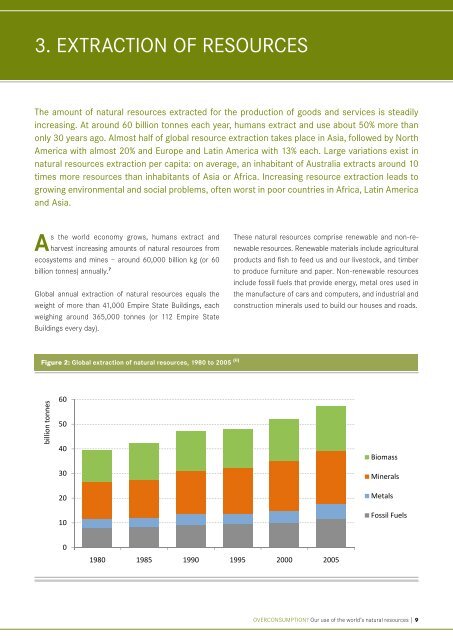overconsumption--2009
overconsumption--2009
overconsumption--2009
- No tags were found...
Create successful ePaper yourself
Turn your PDF publications into a flip-book with our unique Google optimized e-Paper software.
3. Extraction of resourcesThe amount of natural resources extracted for the production of goods and services is steadilyincreasing. At around 60 billion tonnes each year, humans extract and use about 50% more thanonly 30 years ago. Almost half of global resource extraction takes place in Asia, followed by NorthAmerica with almost 20% and Europe and Latin America with 13% each. Large variations exist innatural resources extraction per capita: on average, an inhabitant of Australia extracts around 10times more resources than inhabitants of Asia or Africa. Increasing resource extraction leads togrowing environmental and social problems, often worst in poor countries in Africa, Latin Americaand Asia.As the world economy grows, humans extract andharvest increasing amounts of natural resources fromecosystems and mines – around 60,000 billion kg (or 60billion tonnes) annually. 7Global annual extraction of natural resources equals theweight of more than 41,000 Empire State Buildings, eachweighing around 365,000 tonnes (or 112 Empire StateBuildings every day).These natural resources comprise renewable and non-renewableresources. Renewable materials include agriculturalproducts and fish to feed us and our livestock, and timberto produce furniture and paper. Non-renewable resourcesinclude fossil fuels that provide energy, metal ores used inthe manufacture of cars and computers, and industrial andconstruction minerals used to build our houses and roads.Figure 2: Global extraction of natural resources, 1980 to 2005 (ii) OVERCONSUMPTION? Our use of the world’s natural resources | 9


